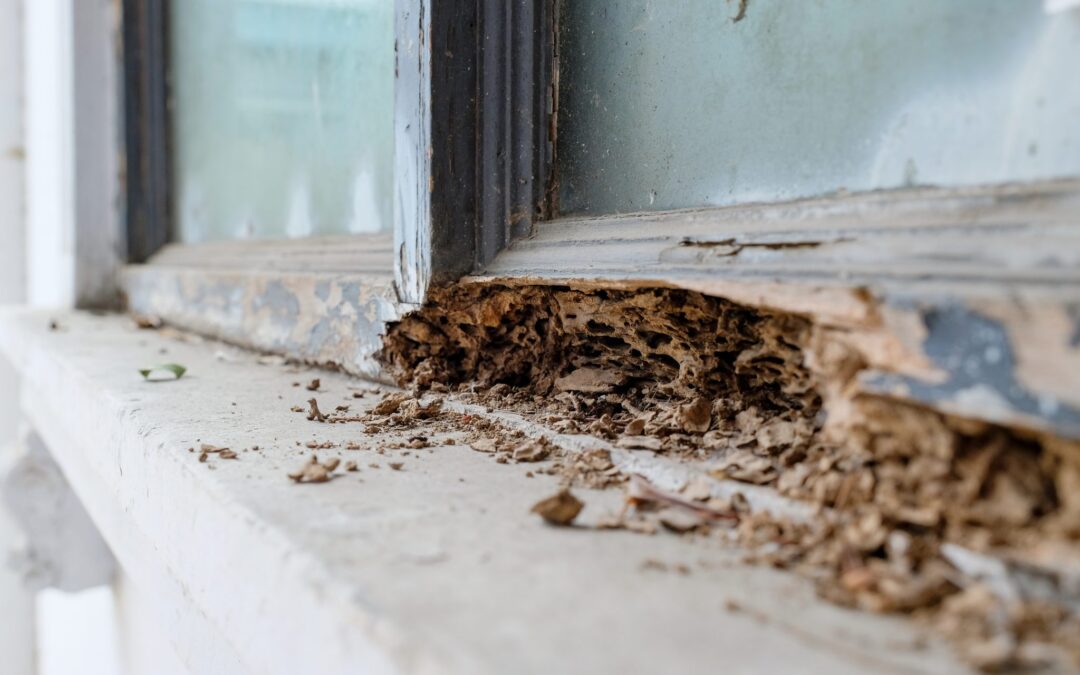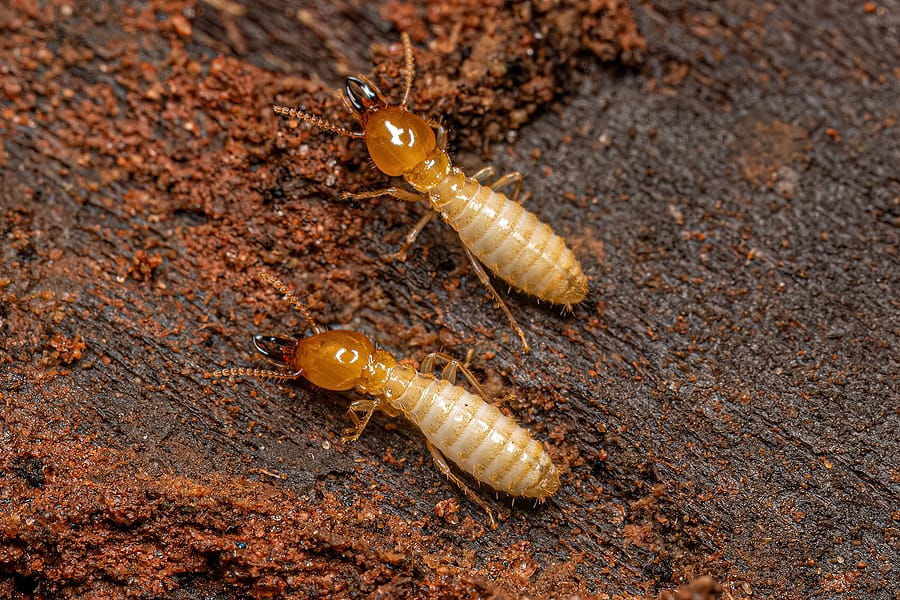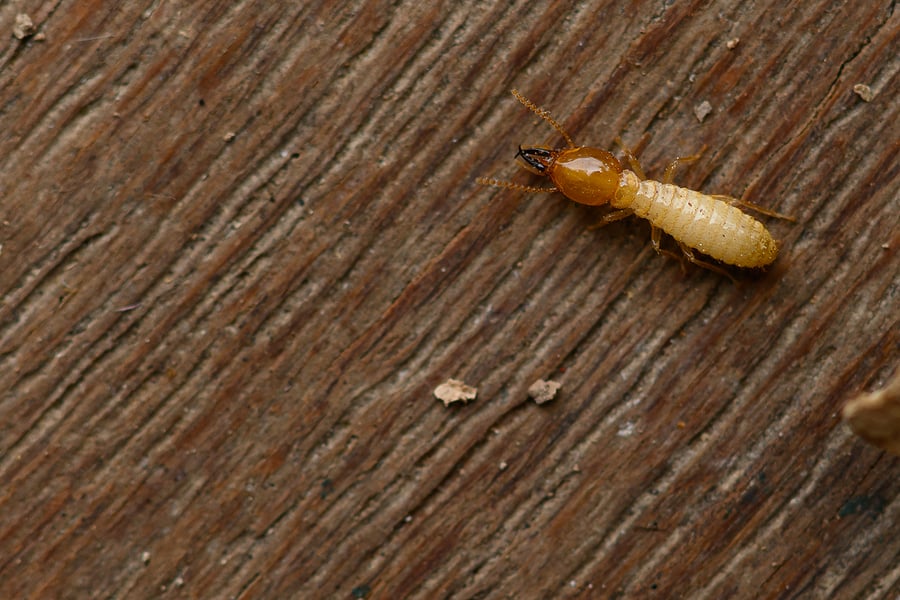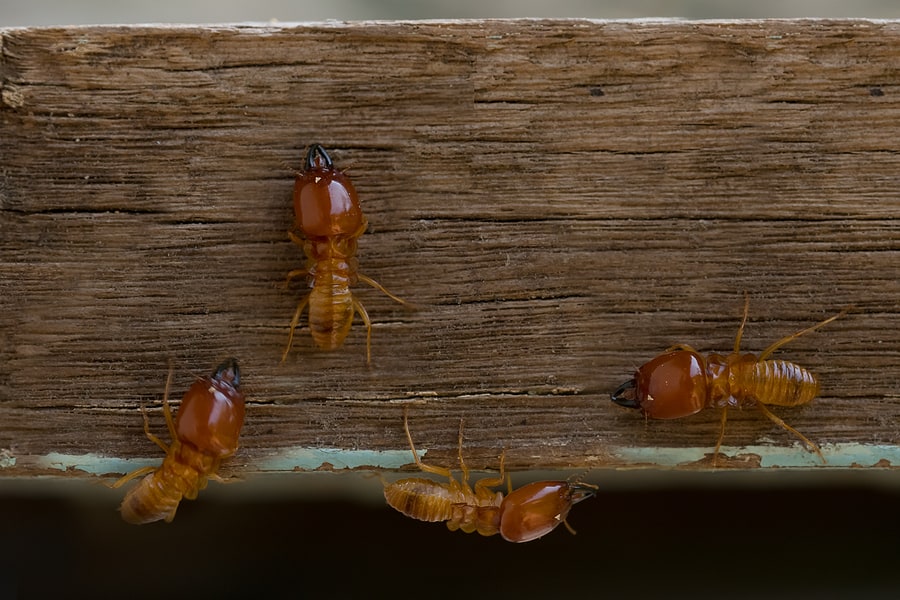READY TO GET STARTED?
REQUEST A FREE ESTIMATE
Fill out the form below or call (888) 466-7849 for a free, no-obligation estimate.

Drywood termites may be small, but their impact on Tennessee homes can be massive. These pests burrow deep into wood, causing hidden structural damage that weakens your property and reduces its market value. Left unchecked, they can lead to costly repairs, hurt resale prospects, and threaten your home’s health. Here’s how to protect your investment.
Unlike subterranean termites, drywood termites don’t need soil to survive. They infiltrate timber in walls, floors, and furniture, often going undetected until damage is severe. The long-term consequences include:
Detecting drywood termites early can save you thousands. Watch for:
Preventative measures are your best defense. Follow these steps:
For a greener solution to infestations, try:
Don’t underestimate the cost of inaction. Drywood termites threaten your Tennessee home’s value and overall health. Act early to spot infestations, prevent damage, and keep your property market ready. Consult pest control professionals to ensure your home remains a secure and termite-free investment.
Ready to get started? Give us a call or click the button below for your FREE termite control quote!

Termites are so destructive because they eat wood from the inside out, often going long periods of time before they are discovered. For this reason, annual termite inspections are critical to protecting your home. These inspections help spot signs of termites sooner, allowing termite control to be implemented earlier in the termite infestation.
There are several different options when it comes to termite treatments. Here are four of the most popular:
Liquid-soil termite treatments are applied to the soil around your home to act as a treatment barrier. They last for an average of 5 years. A trench is dug around the perimeter of your home, and liquid termiticide is applied. The trench is then filled in. This method helps to prevent future infestations while also killing any existing termites as they travel between your home and their nests.
Bait station treatments are another option for termite control. Bait stations are strategically placed around your home using this method. Each station contains a slow-acting termiticide that the termites take back to their nests and share with other termites. These treatments may take longer to work on termites. They also necessitate regular monitoring and maintenance to ensure that each station contains bait.
Wood treatments are an additional termite control option. These treatments make use of either surface sprays and treatments or injected sprays and foams. Wood treatments kill existing termites while also penetrating the wood to prevent future problems. These treatments necessitate direct access to infested wood, which can be difficult to obtain in some cases. Sprays are better for new construction treatments because the wood can be treated while the house is being built. Injected foams are better for use on existing structures because they can expand into cracks and crevices that sprays may not be able to reach.
Pre-treated building materials are ideal for new construction. The termiticide can be sprayed or brushed on. Termiticide can also be applied anywhere the new structure comes into contact with the soil, allowing the soil to be pretreated. Using pressure treated wood is another option because termites are less likely to infest wood that has been treated with chemicals.
While these termite treatment options are efficient at eliminating existing infestations, unfortunately they do not provide permanent elimination of termites. There is always a risk that termites will return to invade again. Termite control is an ongoing process, requiring persistent maintenance and prevention techniques to continue to keep them out.
You can prevent termites by:
Contact your local pest control company for a thorough evaluation.
How to Keep Spring Wildlife Out of Your Home
How Dangerous Is The Water Moccasin?

Subterranean and drywood termite types are popular within the Coral Springs area, looking for homes for their next meal! Termites are year-round pests, making it essential for every South Florida homeowner to be on top of termite control. Check out the top 5 ways you can prevent termites from invading your home and causing billions of dollars in repairs!
If you’re keeping wood stacked against your house, you could be leading termites right inside your home! Leaving woodpiles near your home is not only a great source of food for termites, but it also gives them a safe passage into your home. To avoid the risk of a termite infestation, don’t store any type of wood products in your crawlspace and stack your woodpiles at least 20 feet away from your home. For extra precautions, consider placing wood in a sealed plastic container with a lid and elevating it off the ground.
Termites need moisture to survive, and if there’s any improper drainage in or around your home, you create the ideal environment for them to thrive. Inspect your downspouts and divert water away from your home. Regularly check that your faucets and A/C drip lines are not causing water to pool around your foundation.
Did you know wood mulch is a major termite attractant? It’s true that wood mulch can be a great landscaping tool, but it is known to contain moisture that attracts termites. If you’re using mulch, keep it at least four inches away from your foundation. Likewise, make sure it never contacts the home’s siding, window frames, or door frames. Sometimes an overlooked reason for a termite infestation is clogged gutters. Clogged gutters containing debris will collect moisture, attracting termites. It’s important to remove debris and clean your gutters on a regular basis to avoid backup.
Trees hanging over your home and overgrown bushes can create the perfect shelter area for termites. These areas will often cause moisture to build up and provide an area to build their colony. Avoid termites utilizing your landscape by regularly maintaining it and keeping your trees and shrubs trimmed on a regular basis.
While the above can help make your home less attractive to termites, the best and most effective way to avoid termites is to do a home inspection and regular termite treatments. There are several termite treatment options, such as bait stations, liquid-soil treatments, and spray/foam treatments. It’s best to contact your local Coral Springs pest control company to provide you with a thorough termite inspection and recommended termite control plan that works best for your situation.

Termites cost homeowners billions of dollars each year. Known as silent destroyers, these pests eat wood from the inside out, going long periods of time undetected in your home. Treating termites depends on the type of termite you have. The most common are drywood termites, dampwood termites, and subterranean termites.
You can protect your home from termites by having an annual termite inspection performed on your home. A termite technician will come out once a year and inspect the inside and outside of your home for signs of termites. You can also help prevent termites by keeping soil around your home dry, making sure landscaping doesn’t touch foundations, fixing leaks, and using concrete for foundations.
Sometimes despite our best efforts, termites invade our home. Once they get in, professional termite treatments are necessary to completely eliminate the infestation. The type of treatment you use depends on the type of termite you have. The three most common types of treatments include liquid-soil treatments, bait stations, and sprays/foams.
One of the most important questions any homeowner wants to know when treating termites is how long the treatment takes to work.
Termites can be a big headache for homeowners. If you have a problem with termites or just want to get ahead with prevention, contact a pest control company who can provide you with a thorough inspection and termite control plan that works best for your situation.
What Types of Grasses Work for My Georgia Lawn?
5 Signs You May Need an Exterminator
Termites can cause serious damage to your home, affecting both its structure and integrity. Termite damage can also be costly to repair. Let’s take a closer look at how to recognize when you have a termite problem, as well as the different types of termite treatments that are available today.
The first step in preventing termites is to identify when you have a problem. Termites eat wood from the inside out so they often go undetected for long periods of time, causing substantial damage before you even realize you have a problem. Recognizing the signs of termites in your home is a good first step to identifying their presence. Common signs of termites include:
The best way to control termites is to prevent them in the first place. Some common termite prevention tips include:
Once you have an established termite infestation, the next step is deciding which termite control treatment is best for your situation. Treatments depend on a variety of factors including the type of termite you are dealing with, the severity of the infestation, the type and size of your home, whether it is a new construction or an existing home, the cost of the treatment, and more. There are four main types of termite treatments:
Liquid-soil termite treatments are used on the soil surrounding your home to act as a treatment barrier. They are long lasting, providing protection for an average of 5 years. With these treatments, a trench is dug around the perimeter of your home and liquid termiticide is applied. The trench is then filled back in. This method helps prevent future infestations, as well as killing any existing termites as they travel between your home and their nests.
Bait station treatments are another option for treating termites. In this method, bait stations are strategically placed around your home. Each station contains a slow-acting termiticide that the termites take back to their nests and share with other termites. These treatments can take longer to affect termites. They also require regular monitoring and maintenance to make sure each station still contains bait.
Wood treatments offer another alternative to termite control. These treatments utilize either surface sprays and treatments or injected sprays and foams. Wood treatments kill existing termites and also soak into the wood to prevent future problems. These treatments require direct access to infested wood which can be difficult to get to in some circumstances. Sprays are better for use in new construction treatments as the wood can be treated as the house is being built. Injected foams are better for use on existing structures as they can expand into cracks and crevices that sprays may not be able to reach.
Pre-treated building materials are best used for new construction. The termiticide can either be sprayed or brushed on. Termiticide can also be applied anywhere the new structure comes into contact with the soil, allowing the soil to be pretreated. Using pressure treated wood is also an option as termites are less likely to infest wood that has been mixed with chemicals.
Termites are a serious problem for homeowners. If you suspect you have a problem with termites or other pests, contact your local pest control company for an inspection.
Protecting Your Pets from Fleas and Ticks
What Happens During the Bee Relocation Process?
When Should Mosquito Treatments Start?